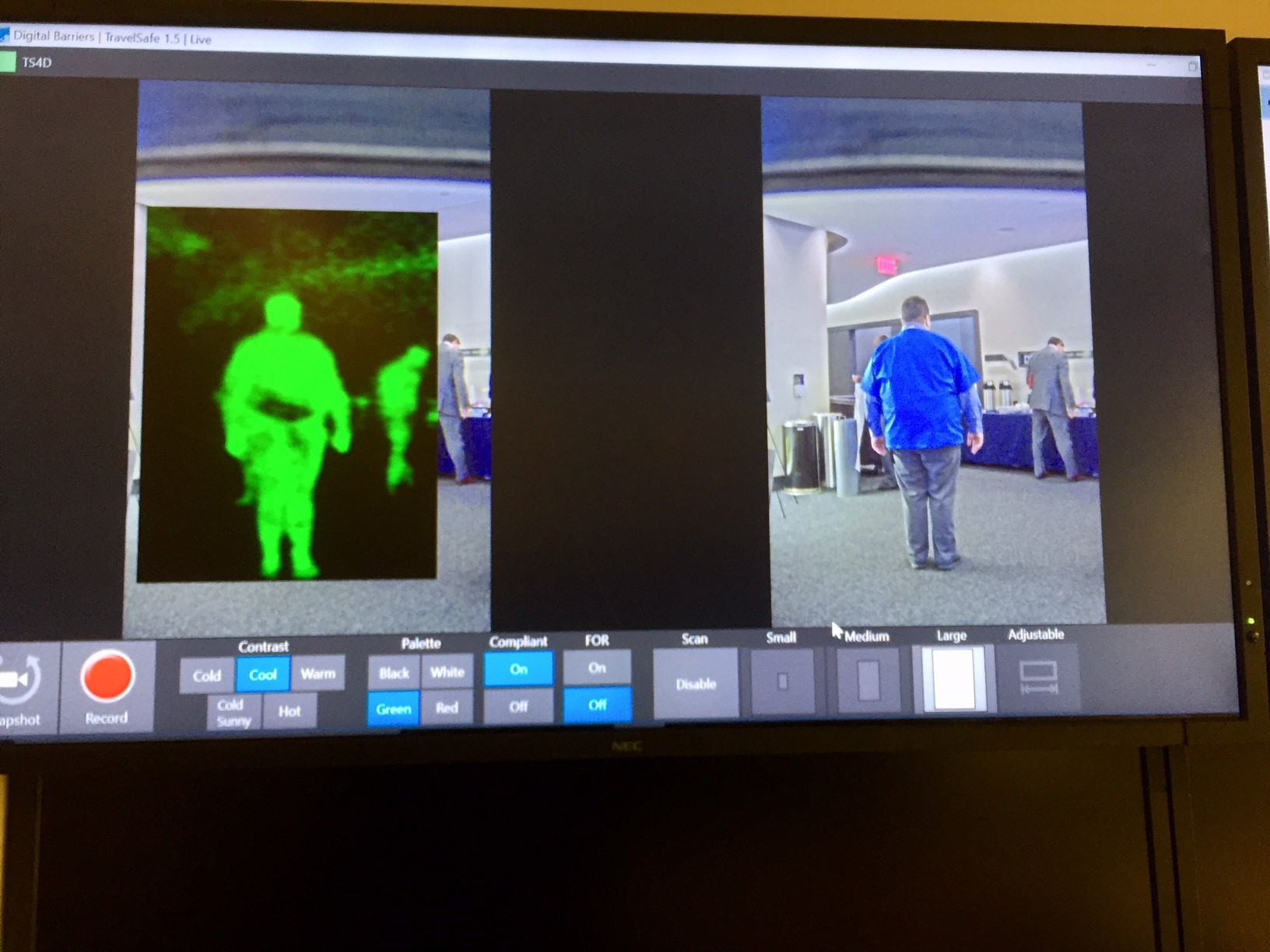 The technology shows a “green ghost” image of an individual who has an explosive device concealed on his back, beneath his shirt. (TSA images)
The technology shows a “green ghost” image of an individual who has an explosive device concealed on his back, beneath his shirt. (TSA images)
ARLINGTON, VA – The Transportation Security Administration (TSA) and Metro (Washington Metropolitan Area Transit Authority) are partnering to test new security technology intended to protect riders by detecting potential explosive devices and other dangerous items before they enter the transit system. This week, the agencies are evaluating a next-generation system that can detect an individual concealing an improvised explosive device, such as a suicide vest, near the entrance of the Pentagon City Metrorail Station on Metro’s Blue and Yellow lines. It marks the first time that Metro is testing this kind of technology.
The passive system, known as a stand-off explosive detection unit, will indicate if an individual carrying/wearing a person-borne improvised explosive device (PBIED) passes by the unit. The technology can be used by Metro and other public transit systems to detect other potential threats by identifying objects—metallic or non-metallic—hidden on a person’s body.
At Pentagon City station, Metro customers simply walk past the equipment as they normally would. The screening is completely non-invasive and do

The use of the device is intended to help transit agencies safeguard against terrorist threats. The system is operated by employees of the agency (e.g. Metro Transit Police), not by TSA. TSA is, however, supplying the equipment for the purpose of the demonstration.
The equipment is mobile, which allows agencies to easily relocate it to different stations. Users operate it via a laptop computer in the station.
TSA has been working with several passenger rail and transit agencies as test beds on demonstrations of this type of security equipment, including Amtrak, New Jersey Transit, the Los Angeles Metropolitan Transit Authority and the New York Metropolitan Transportation Authority. Most recently, TSA partnered with Amtrak inside Union Station in Washington, DC prior to the Thanksgiving holiday.
